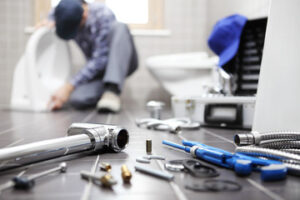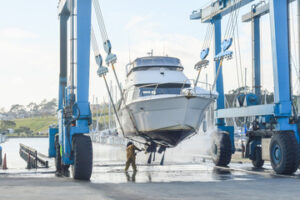When hiring Landscaping Contractor Cape Girardeau MO you want to find an experienced professional who is licensed and insured. They should be able to provide quality work within a reasonable timeline.

In addition, they should understand industry standards and be able to address any questions or concerns you may have. This will ensure your project stays on track and within budget.
When hiring a landscaping contractor, it is important to define your vision. This will help the contractor understand your goals and will ensure that they are on the same page throughout the project. A clear understanding will also reduce the risk of misunderstandings that could lead to costly mistakes or delays in the project.
Start your search for a landscaping contractor by asking for personal referrals from friends, family members or neighbors. Personal referrals can offer valuable insights into a contractor’s work quality, professionalism, and overall client satisfaction.
Once you have a list of potential contractors, conduct thorough background checks to evaluate their credentials. Look for experience, education, licenses, and certifications. In addition, check with local zoning authorities to determine whether your landscaping project will require a permit.
Next, schedule an initial consultation to meet with the contractor and discuss your vision. During this meeting, the contractor will take note of your needs and discuss various design options that can achieve your desired results. For example, if you are looking for privacy, the contractor will discuss ways to shield your property from nearby homes or roadways. Then, they will analyze the current topography to determine how you can maximize your existing features, such as trees and waterways, while minimizing areas that do not add value to the space.
When establishing your budget, consider long-term maintenance costs when selecting plants and materials. For example, opt for native species that can withstand your climate and require less maintenance than exotic plants. Additionally, use less expensive paving materials for your hardscaping instead of natural stone to cut down on costs. By planning for these costs, you can create a beautiful landscape that is both functional and sustainable.
Researching Potential Contractors
A landscape contractor is a key part of the home design process, transforming outdoor spaces into beautiful, functional areas that complement a house’s architecture and boost its value. Using a combination of art and science, they help homeowners achieve their visions while mitigating challenges like weather, soil quality, and plant compatibility.
When selecting a contractor, it’s important to vet them thoroughly. This includes checking their license, insurance, and credentials. It also means reading reviews and testimonials, as well as visiting completed projects. Inquiring about their project management approach can give you a sense of their professionalism and communication skills.
Once you’ve narrowed down your selection, ask each candidate for a detailed proposal with drawings, material specifications, and a desired timeline. Compare the proposals to find the best match for your needs. When reviewing a contractor’s proposal, pay particular attention to their cost estimations and how they account for potential unforeseen challenges during construction.
Finally, it’s a good idea to check if they have industry certifications or memberships in professional associations. These can indicate a commitment to excellence and adherence to industry standards.
Establishing Clear Lines of Communication
Landscape contractors work to transform outdoor spaces, bringing beauty and functionality to a home. Their specialized knowledge is the key to creating a garden that both reflects a homeowner’s aesthetic vision and withstands the challenges of outdoor elements, including soil quality and climate. Choosing the right landscaping contractor is crucial for ensuring that your vision becomes a reality and increasing your property value.
To ensure that your vision is carried out correctly, choose a contractor who communicates clearly and professionally. This can be done by reviewing customer reviews and testimonials as well as scheduling consultations with potential candidates. The goal is to establish a consistent communication chain of command, ensuring that all parties understand what is being discussed and the expectations for each phase of the project. It is also important to schedule regular meetings and check-ins throughout the process. This will help to avoid misunderstandings and ensure that the project stays on track.
In order to maintain a sustainable business model, landscape contractors must foster an environment of collaboration with all stakeholders, including clients, horticulturists, and engineers. This will allow them to streamline project operations, share innovative ideas, and address sustainability concerns. Additionally, it will enable them to better meet environmental standards and resonate with eco-conscious consumers.
Finding the best landscaping contractor can be a daunting task, but it is possible to find the perfect match with a little bit of research and preparation. Start by searching online for local professionals, using keywords such as “landscape contractor near me” or “landscapers.” Once you’ve narrowed your options, review customer reviews and compare photos of past projects to determine which contractors are most qualified. Additionally, search for contractors in online directories such as Yelp and Angie’s List. These websites often have strict membership criteria and can provide valuable insights into a contractor’s work quality, professionalism, and reliability.
Be Flexible
A reputable contractor will be able to work within your budget and give you options that make the most of your space. They should also be open to new ideas and suggestions. If you stay flexible and open to compromise, you will be able to create the outdoor space of your dreams with your contractor.
Landscaping projects are often complicated, so there are bound to be unforeseen issues that arise throughout the process. A landscaper with extensive industry knowledge will be able to assess these situations and come up with effective solutions that keep the project on track. This will help you avoid costly delays and ensure that your finished product is up to par.
In addition to creating functional and aesthetically pleasing outdoor spaces, landscaping contractors can also add value to your home by increasing its curb appeal. By taking advantage of their expertise, you can ensure that your property will stand out in the neighborhood and be a welcome respite for homeowners looking to escape from the hustle and bustle of everyday life.
As opposed to architects, who are trained to design entire buildings, landscapers are experts at constructing and installing outdoor features such as patios, walkways, retaining walls, and water features. They are also familiar with the local climate and plant species and can recommend greenery that will thrive on your property.
A licensed landscape contractor is held to a higher standard of professionalism and accountability, which helps reduce the risk of miscommunication or subpar work. They should also carry liability insurance, which protects you from any damages or injuries that may occur during the course of the work. Additionally, a landscaping license can help you bid on bigger projects and work with government agencies that require compliance with strict regulations.
Monitor the Progress
When choosing a landscape contractor, it is important to monitor the progress of their work. This will help ensure that they stay on schedule and meet your expectations. A good way to do this is by establishing regular check-ins with the contractor and communicating effectively throughout the project.
Landscaping contractors should be able to provide references from previous clients and projects to give you an idea of their reputation and reliability. In addition, you should also check if they are licensed and insured. This will protect you in case of any accidents or damage caused during the project.
Additionally, you should consider whether they have experience working with HOAs and understand the unique needs of these types of communities. You should also look for landscape contractors who use environmentally friendly fertilizers, pesticides, and other landscaping products. They should also recycle and dispose of green waste in a responsible manner.
Another thing to look for is the ability to create a cohesive outdoor space that combines both soft and hardscape elements. Hardscaping refers to the non-living parts of a landscape, such as walkways and patios, while softscaping includes the plants and trees that are planted on your property. A qualified and experienced landscape contractor should be able to design and install both types of elements to complement each other and enhance the beauty and functionality of your property.
Builder business software helps streamline landscaping operations by integrating several functions into a single system, including lead management, job tracking, estimating, project management and invoicing. It can also help improve sales team performance by empowering them with actionable insights and automated reporting. This way, you can manage your business more efficiently and keep customers happy.




